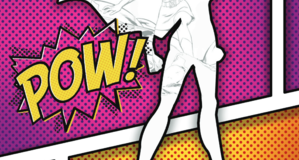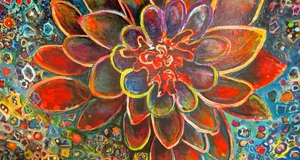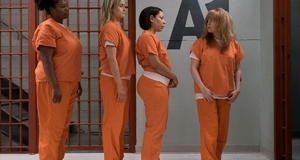Featured Article:Superheroes, Superpowers, and SexualityWords and the SuperheroHow Their Creators View ThemAnthropologist Emily Martin explores how the way we speak about our bodies affects our understanding of reality about how gender “naturally” is by providing us with examples of alternative but related ways of speaking about, and therefore understanding the body. Martin shows that we construct our “natural” reality, at least in part, by how we speak about it. In the same way, we can see that the way the companies which created the superheroes talk about their characters enforces the sexuality of the heroes. The way female heroes are described places a heavy emphasis on their appearance and femininity. The X-Men member Emma Frost is described in her bio as follows. A diamond-sculpted seductress with the brains to back up her body of work, Emma Frost amassed wealth and influence enough to attract the attention of the planet’s social elite. As White-Queen of the exclusive Hell-Fire Club, Frost’s power plays frequently put her at odds with the heroic X-Men. (www.marvel.com) The words “diamond-sculpted seductress” at the very beginning of her description immediately indicates her exaggerated femininity. Also, the fact that brains come second “to back up her body of work” indicates that brains are not what a woman should have first, but looks are. Marvel Comics continues to describe their female heroes with phrases like, “feline fatale…pretty little paw,” for Black Cat, “femme fatale…lured by her beauty, many a man has felt the Widow’s Sting” for Black Widow 1, “tempering telepathy and telekinesis with warmth and compassion, Jean secretly hungers for a passionate partner,” for X-Men’s Jean Gray, and “a classic beauty in every sense of the word,” for Storm, also of the X-Men (www.marvel.com). DC Comics does not appear to be much different for they describe Catwoman “in a tight leather cat suit…the Princess of Plunder…[whose] heart would always belong to Batman,” and exalting Wonder Woman as being “as beautiful as Aphrodite” (www.dccomics.com).In all of these cases, the authors wanted to extol the heroines’ feminine virtues. They imply that powers should be “[tempered] …with warmth and compassion,” and imply in several instances that the heroine would not be complete without her male counterpart, as in the case of Catwoman and Jean Gray (www.marvel.com; www.dccomics.com). On the flip side of the coin, the male superheroes are oft described in a manner similar to that of Superman. Superman, the last son of Krypton, represents the very best in humanity…Raising him as their own, the kind-hearted Kents named the boy Clark Joseph and watched in amazement as, little by little, his unique abilities began to manifest themselves. Clark’s body proved to be a veritable solar battery. He absorbed the sun’s energy, which gave him incredible strength, invulnerability, heightened senses, and the ability to fly (www.dccomics.com). Superman is shown to represent “the very best in humanity” and the very best includes “incredible strength, invulnerability, [and] heightened senses.” This would seem to imply that men of our world should strive to be like Superman, to be this over-testosterone-ed alien, who, though he is not human, represents humanity. Other male superheroes are described by Marvel Comics like Dare Devil having “senses [functioning] with superhuman sharpness…a relentless avenger of justice,” or The Human Torch’s activities including, “tormenting his teammate, the Thing – when he’s not chasing skirt in one of his souped-up hot rods!” (www.marvel.com). Here, the creators were describing the heroes’ physical prowess and the heterosexual tendencies of the Human Torch. It all points to them being the strong male. It implies that heterosexuality is important and should be imitated, as well as being strong with sharp senses and they must be a seeker of justice. How They TalkOf course, it is not only the text about the heroes that implies a definite gender role. In RH Robbins’ chapter on the Cultural Construction of Identity, Robbins mentions how Linguist Robin Lakoff “was one of the first to draw attention to the way that a woman’s identity in society influences how she speaks” (Robbins, 2006, pg 205). This same idea is extremely evident in the dialogue in many comics. Lakoff says women are “constrained to minimize their expressions with…tag questions…rising intonations…the use of hedges…[and] indirection” (Robbins, 2006, pg 205). In Ultimate X-Men Vol. 3: World Tour, a graphic novel compilation of 8 X-Men serial comics, both Jean Gray and Storm frequently minimize their expressions (Miller, 2002). Jean Gray ads tag questions like, “You don’t think he might have, you know, gone over to the other side or anything, do you?” and “it’s highly unlikely we’re both off the mark, right?” Storm on the other hand used hedges more frequently like, “Somebody call an ambulance! I don’t think Bobby’s breathing here!!” Instead of saying “Bobby’s not breathing,” Storm adds a hedge to leave an opening for someone to affirm what she is saying. These qualifiers in the super heroine’s language appear to mark them with the “relative powerlessness of women, stemming form their relatively weak social position” (Robbins, 2006, pg 205). Of course, occasionally the content of their conversations also sheds light on the respective gender roles and sexuality. The obvious ones are when the specific genders are separate. When Jean Gray and Storm are discussing Professor Xavier’s book, Storm says, “I saw the chapter on ‘a mutant alternative to boom-and-bust economics’ and went straight back to Cosmo and People Magazine, girlfriend,” which implies that women do not or should not have an interest in such highly academic matters (Miller, 2002). For the men, during a scene where Professor Xavier is grading their attempts at crime solving, there are two full pages of argument between the male teams as to who had the better bust; Wolverine, Bobby, and Colossus who busted a multi-million dollar drug ring and “maimed, killed, or disfigured over twenty human beings in a blaze of Adamantium Fury,” or Cyclops and Beast who broke up some muggers, checked two guys into rehab and made plans for the ex-muggers’ futures (Miller, 2002). The higher grade went to the team who did not kill anyone. But it was an argument about respective strengths and posturing. Another instance where the content of the dialogue was a red flag for distinct sexism, was while Jean Gray was trying to save a plane load of people from a rogue mutant and she says, “We’re under attack, Scott [Cyclops]! Hold my hand! I’m trying to throw a force field around the plane!”(Miller, 2002). There was absolutely no reason for Cyclops to hold her hand; she does not need help for her psychic abilities, nor does she need to touch what she is shielding. It was merely for the support of a man that she needed his touch. So both how the women talk and what both male and female superheroes talk about continues to reinforce the gender role stereo-types that the heroes fall into. The men posture and talk about their strength, whereas the female heroes mode of dialogue show them to be secondary to the males, and that they talk about things that downplay intelligence and cry out for support.Continued on Next Page » Suggested Reading from Inquiries Journal
Inquiries Journal provides undergraduate and graduate students around the world a platform for the wide dissemination of academic work over a range of core disciplines. Representing the work of students from hundreds of institutions around the globe, Inquiries Journal's large database of academic articles is completely free. Learn more | Blog | Submit Latest in Sociology |
















